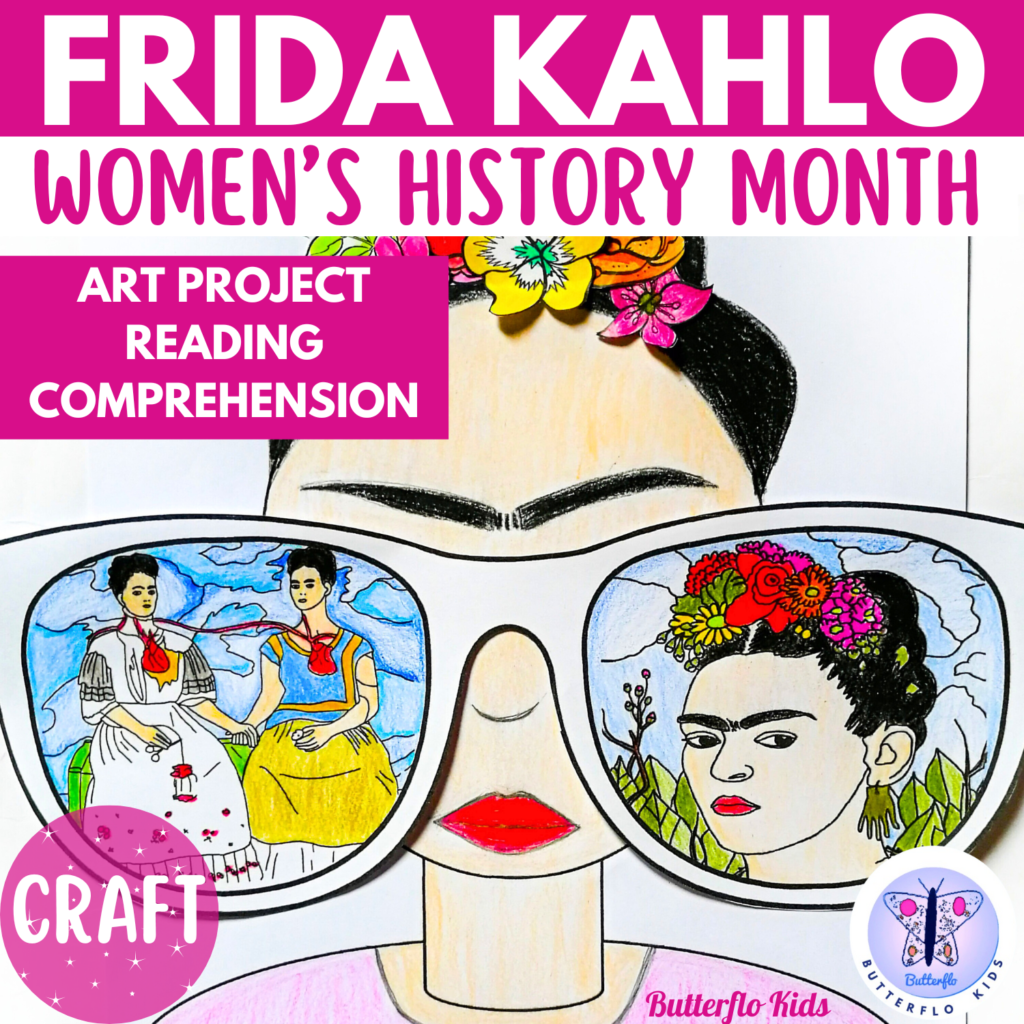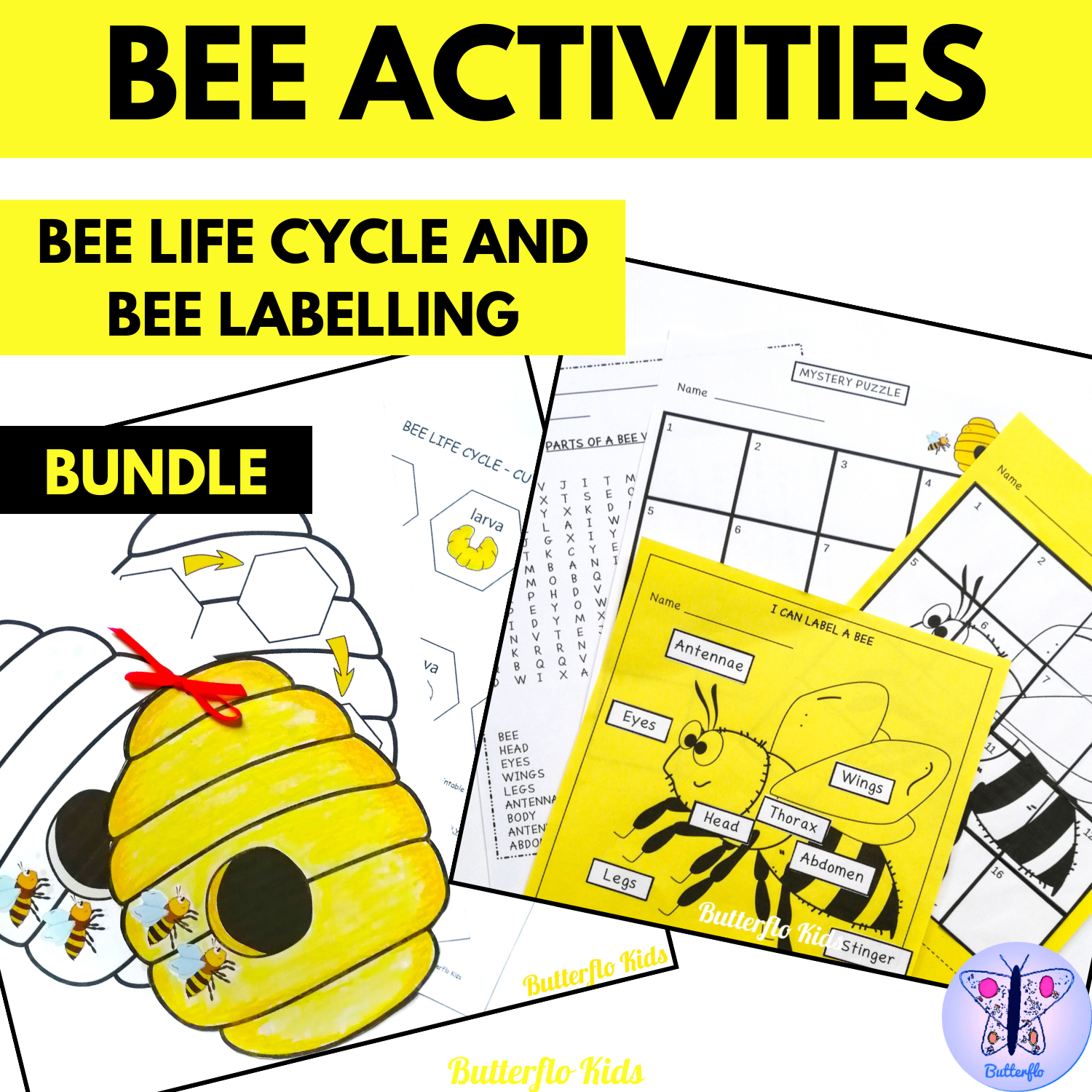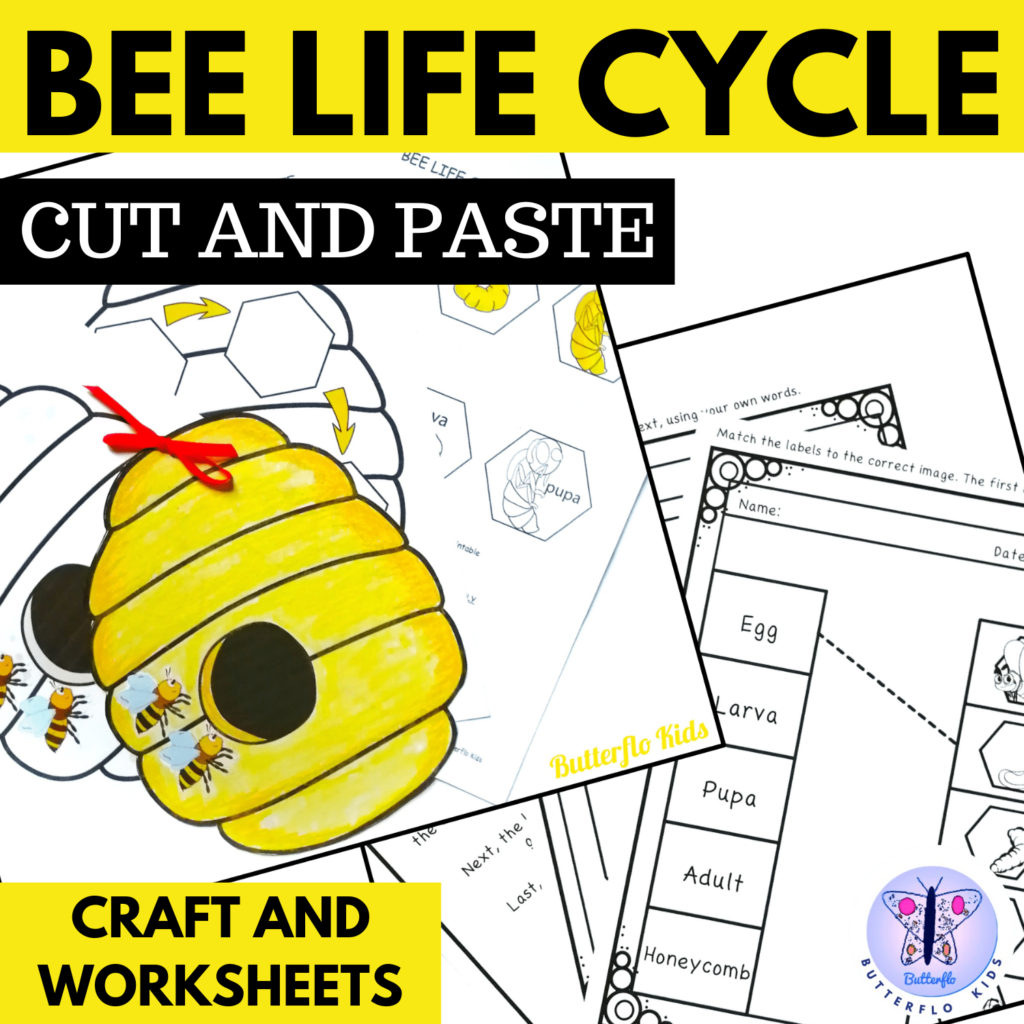
It’s World Bee Day
DID YOU KNOW THAT?
Today we acknowledge the important role of bees and other pollinators in today’s world.
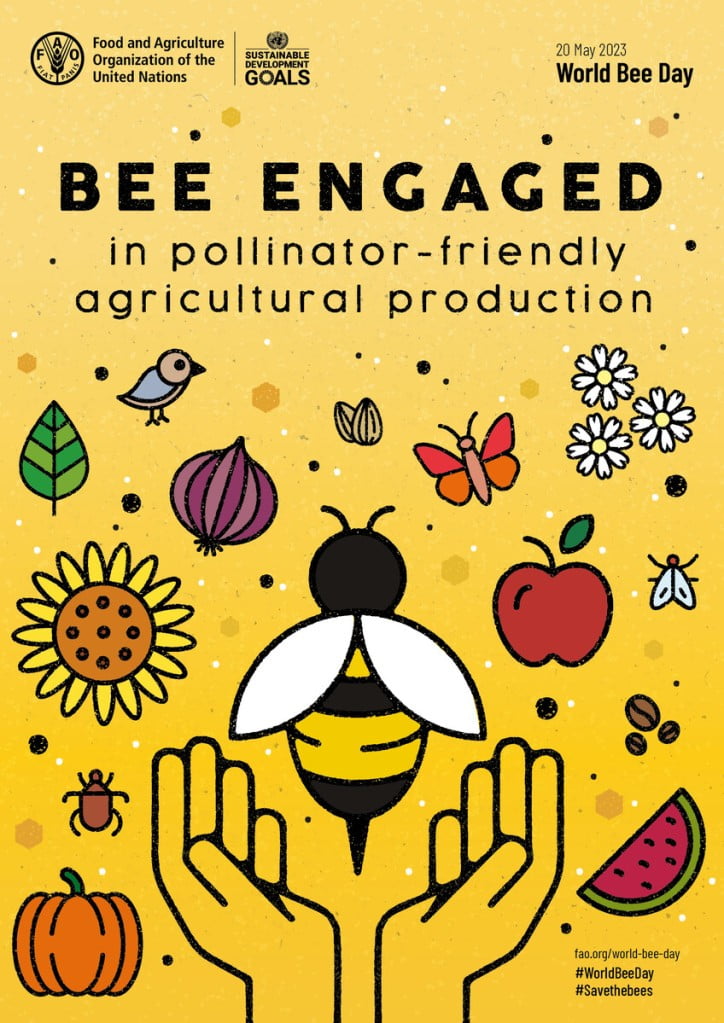
Read more and download
this World Bee Day poster
N.B. I neither work for nor am I affiliated to this organisation.

Bee Life Cycle Craft
An easy and fun way to learn about bees. Just colour, cut and paste.
$1.95
Also available at MY TPT STORE
I use Get DPD to safely deliver my products.
Read What customers are saying about this resource!

“Great activity for bee life cycle.”

“Great resource”
BEE LIFE CYCLE CRAFT
Here is an easy bee life cycle craft for your kids or students.
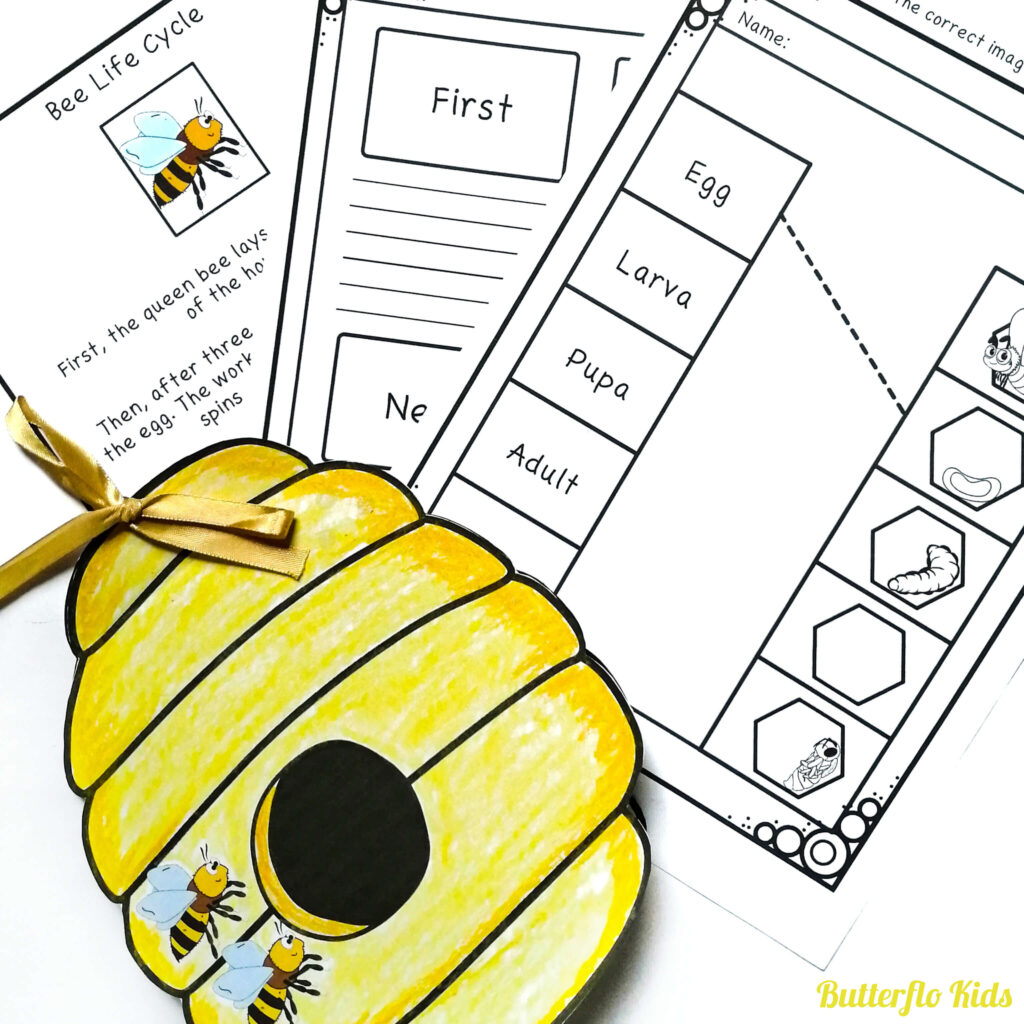
Your students will love making this BEE life cycle craft. An easy and fun way to learn about bees. Just colour, cut and paste. Great for your science projects!
Included in this file is my free Get the Bees to Their Destination resource, which includes:
- A fun counting worksheet
- A line tracing page
- A letter tracing page.
I have updated this resource, and it now includes:
- Bee life cycle reading comprehension
- A matching exercise
- A sequence writing page
ANSWER KEYS ARE INCLUDED
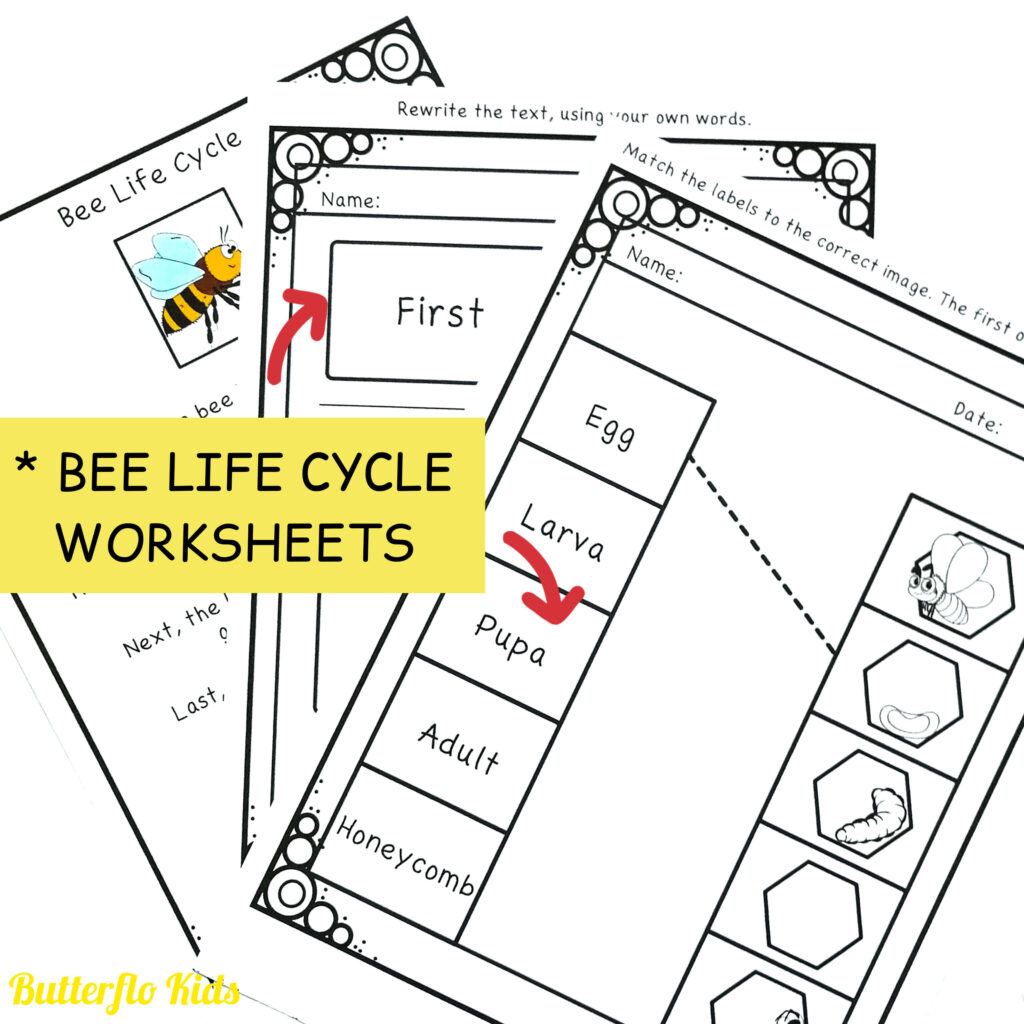
Newly added bee life cycle comprehension worksheets.
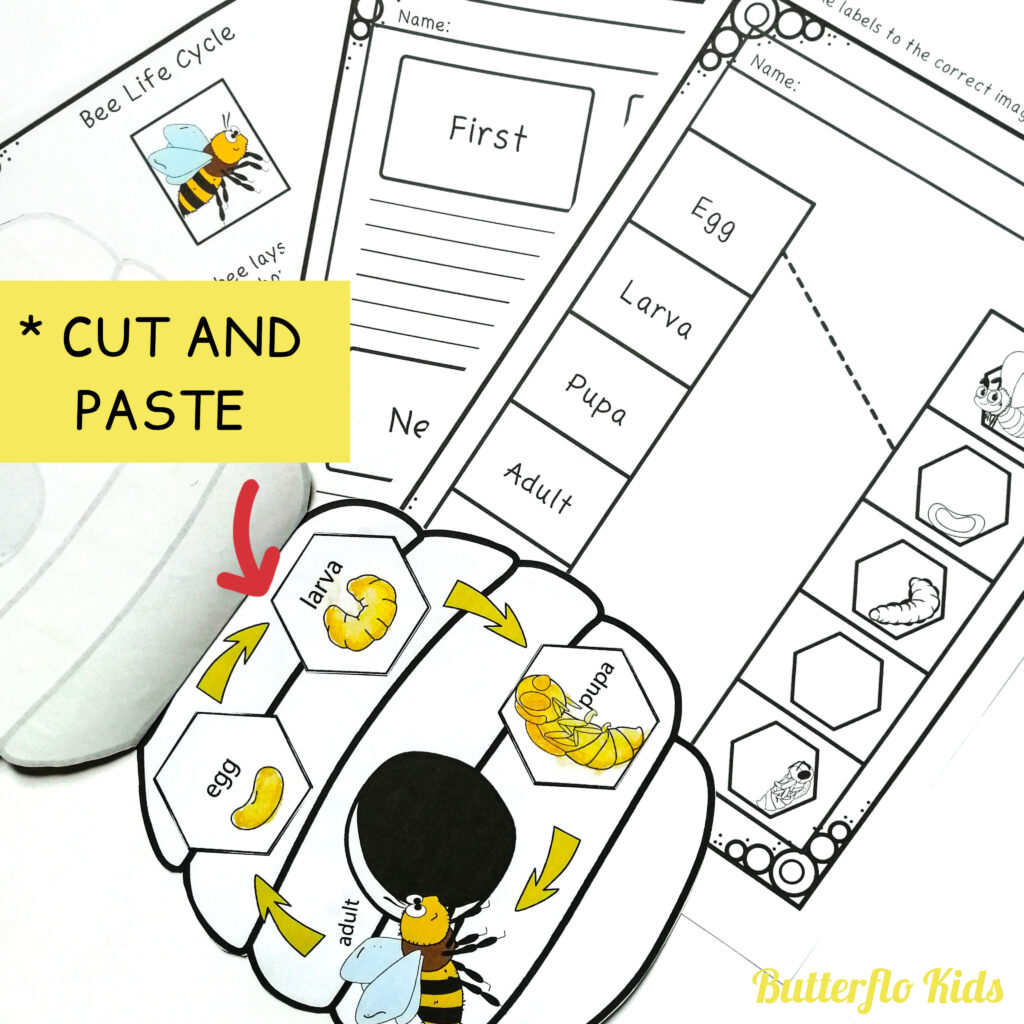
How cute is this bee life cycle craft?
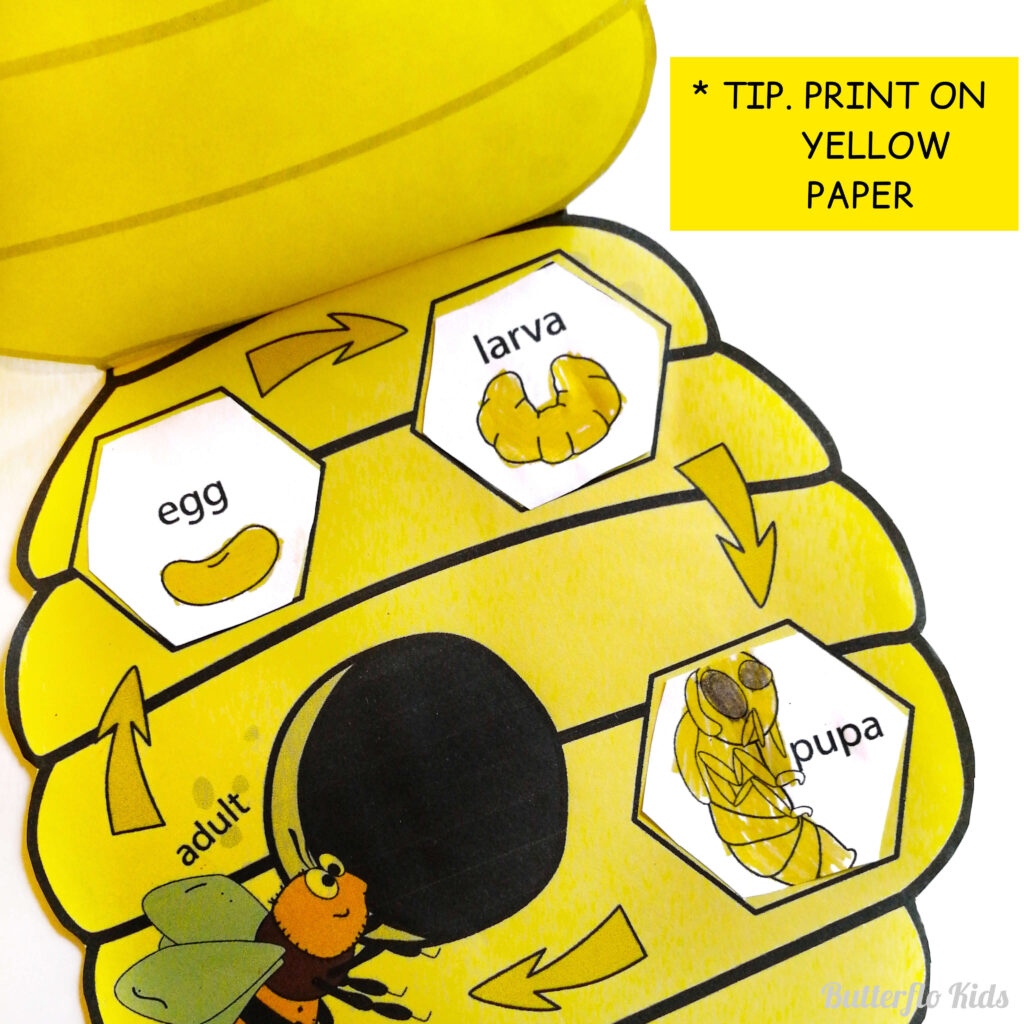
TIP. Print on Yellow paper.
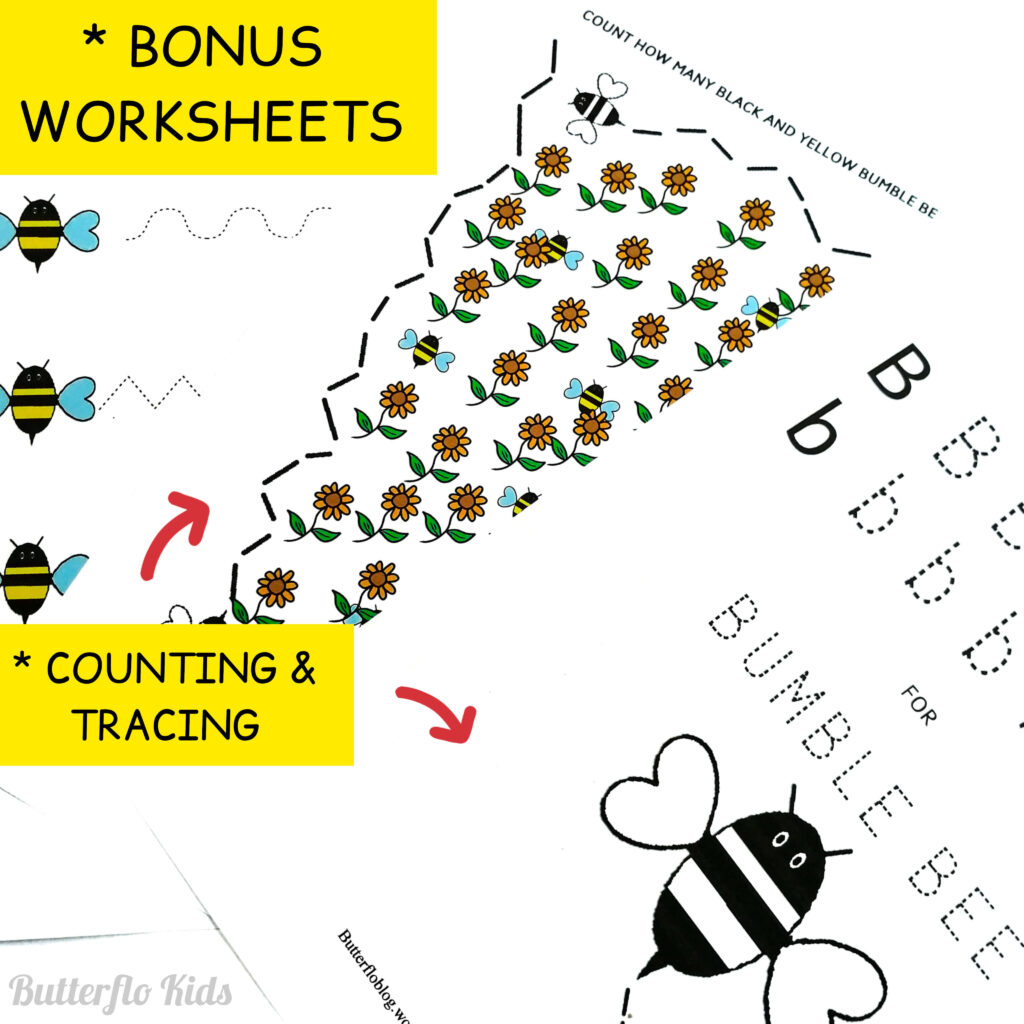
Bee counting and tracing worksheets are included in this resource.
Take a look at the video.
The Bee Life Cycle
Welcome to a fascinating journey into the buzzing world of bees. Firstly, bees are extraordinary creatures that play an essential role in our environment.
Today, we will explore their incredible life cycle, from egg to adult, and learn about the amazing transformations that take place.
Are you ready to dive into the busy world of bees? Let’s begin!
Stage 1: The Egg
Every bee’s life begins with a tiny egg. Firstly, the queen bee, who is the mother of all the bees in the hive, lays these eggs.
She carefully places them inside honeycomb cells. Moreover, these eggs are so small that they can be difficult to see without a magnifying glass. It’s like a tiny speck of rice!
Stage 2: The Larva
After a few days, the egg hatches, and out comes a small, white larva. However, the larva looks quite different from the adult bee we often see buzzing around flowers.
It doesn’t have wings or legs yet. Instead, it is soft and worm-like, and it spends its time growing and eating a special food called “bee bread.”
Bee bread is made by the worker bees, who collect pollen and mix it with honey to create a nutritious meal for the growing larva.
Stage 3: The Pupa
As the larva grows, it sheds its skin several times and enters the next stage called the pupa. During this stage, the larva transforms inside a protective covering called a cocoon.
In fact, it is similar to how a caterpillar transforms into a butterfly. Inside the cocoon, amazing changes are happening. The bee’s body parts, like wings, legs, and eyes, are forming and getting ready for life outside the hive.
Stage 4: The Adult Bee
After spending enough time in the pupa stage, a fully developed bee emerges from the cocoon. Remarkably, this bee is now an adult! At first, its wings are soft and crinkled, but they quickly unfold and become strong.
In addition, the bee also has tiny hairs on its body that help it collect pollen from flowers. Moreover, adult bees are responsible for important tasks like collecting nectar, making honey, and pollinating flowers.
Furthermore, many plants would not be able to produce fruits and seeds without them.
In conclusion
We have explored the incredible life cycle of bees, from eggs to adult bees buzzing about, pollinating flowers and creating sweet honey.
Bees go through remarkable transformations as they grow, reminding us of the wonders of nature. They are diligent workers, always busy and helping to keep our planet healthy and thriving.
The next time you spot a bee buzzing around your garden, remember the incredible journey it has taken to reach that point.
Bees truly are remarkable creatures, and they deserve our appreciation and protection. So, let’s celebrate the magical world of bees and continue to learn more about these important pollinators.
Happy buzzing.
Why you should use this Bee Life Cycle resource in your classroom
English Language Arts
Your students will:
- Learn about the life cycle of a bee through the comprehension reading.
- Practice reading comprehension skills by answering questions about the bee life cycle.
- Improve writing skills by possibly writing about the bee life cycle or discussing it with peers.
Foreign Language
Your students will:
- Learn new vocabulary related to bees or the life cycle in the target foreign language.
- Explore different sentence structures and grammatical concepts related to the bee life cycle.
- Possibly be engaged in a language exchange with a partner to discuss the activity in the foreign language.
Science
Your students will:
- Understand the stages of a bee’s life cycle and how it progresses from an egg to an adult bee.
- Learn about the importance of bees in the ecosystem and their role in pollination.
- Engage in a hands-on crafting activity, enhancing fine motor skills and understanding the practical aspects of the bee life cycle.
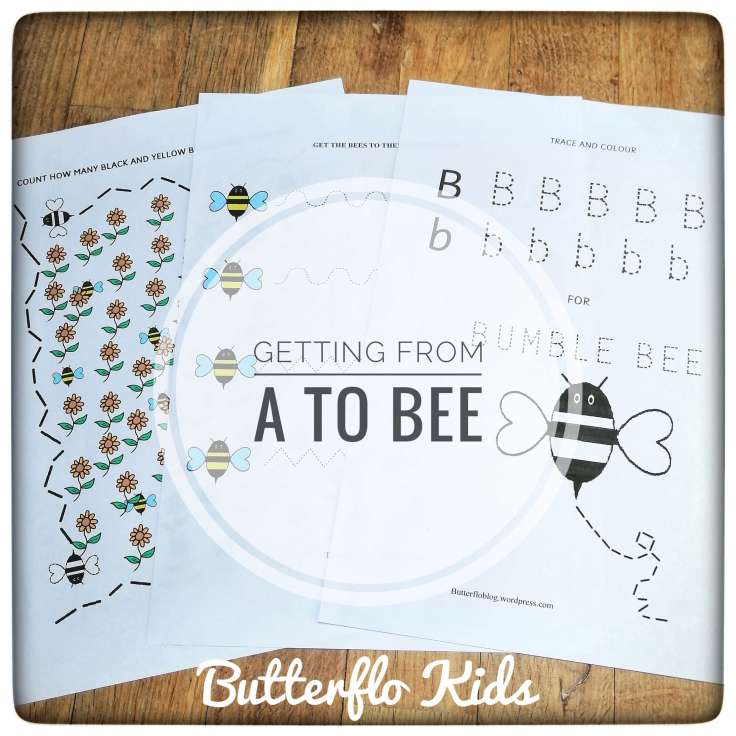
CLICK the link to read more about my Getting from A to BEE resource.
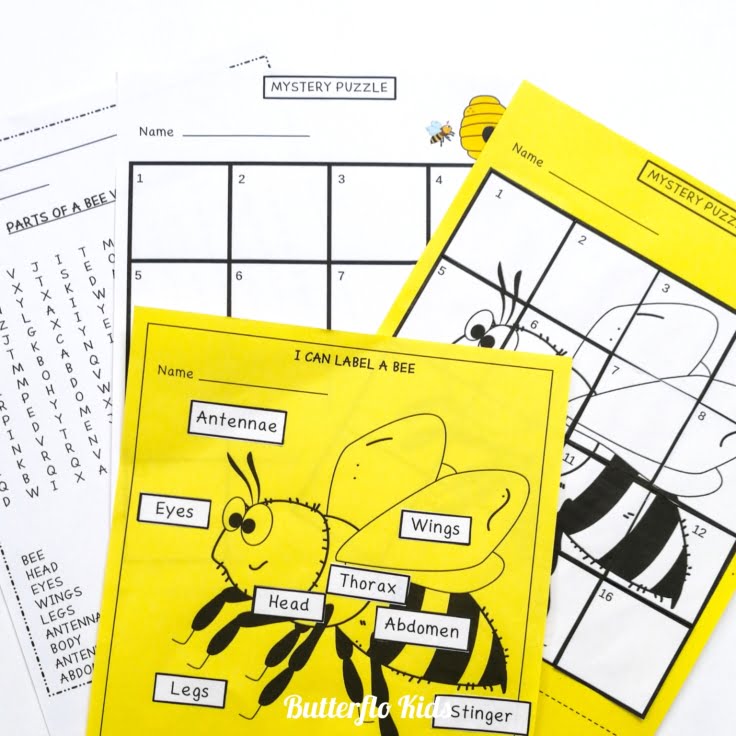
You might also like this Parts of a Bee Labelling Activity
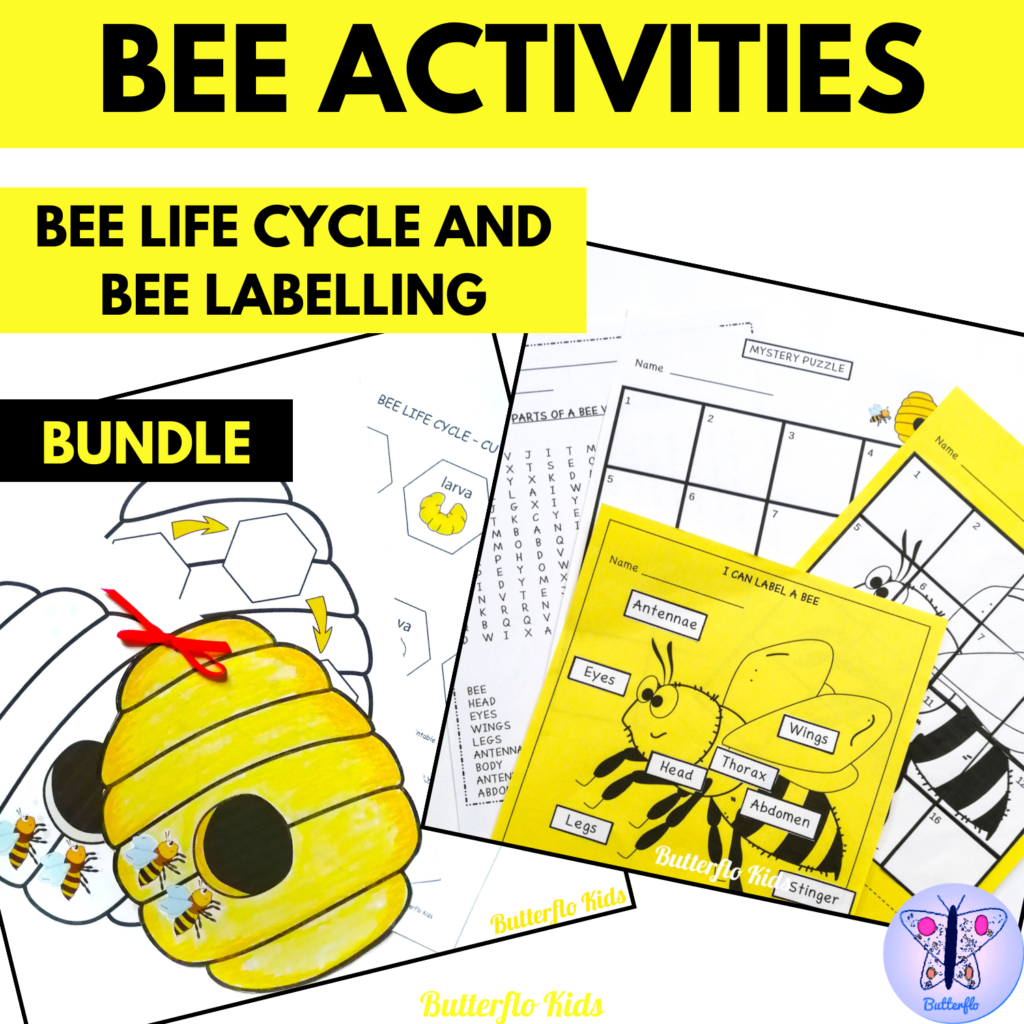
Get my bee life cycle and bee labelling resources together in one BUNDLE
Have fun!





